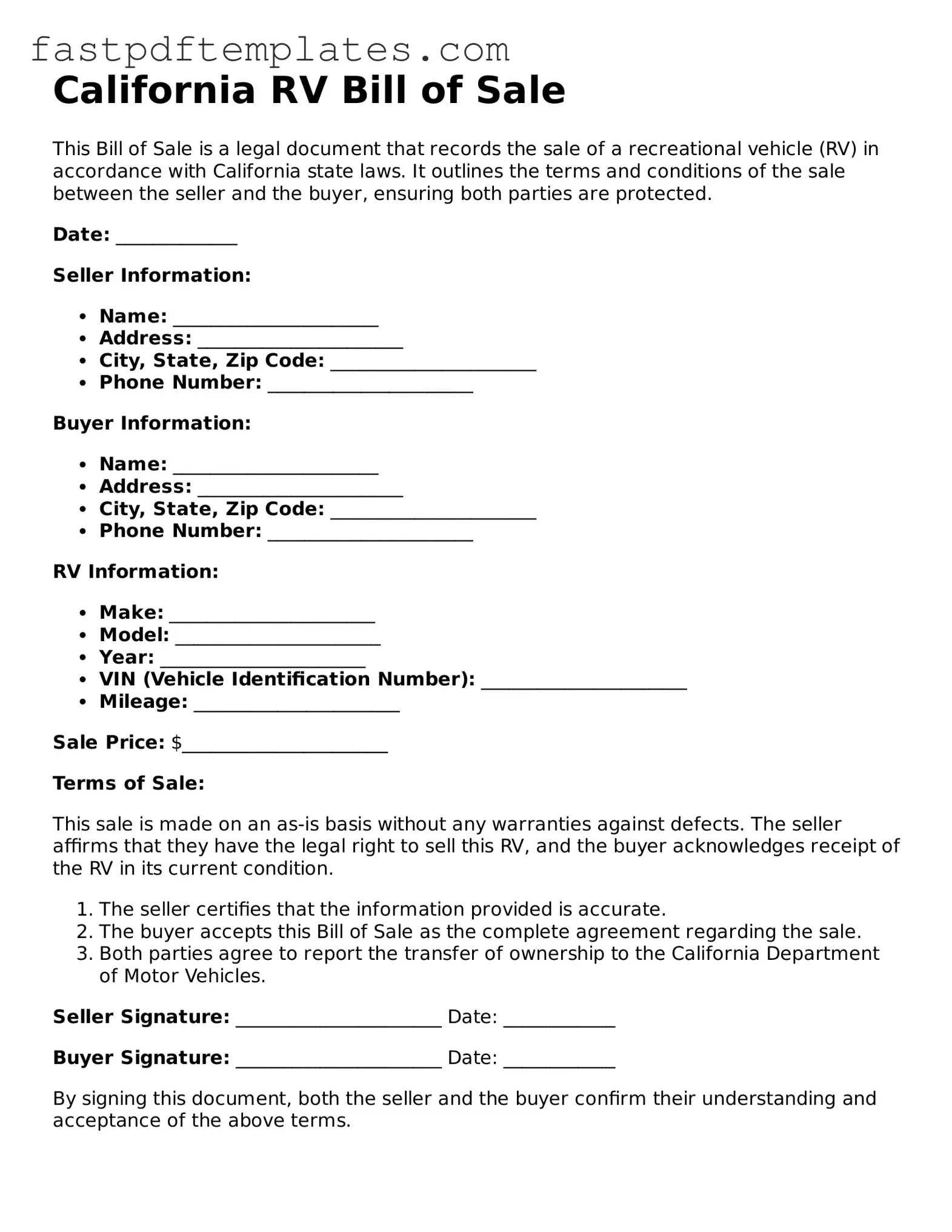The California Vehicle Bill of Sale is similar to the general Bill of Sale, which serves as a written record of the transfer of ownership for various types of personal property. Like the RV Bill of Sale, this document outlines the details of the transaction, including the names of the buyer and seller, a description of the item, and the sale price. Both documents provide legal protection for both parties by documenting the agreement and ensuring that the seller is no longer liable for the item once the sale is completed.
Another document that shares similarities is the Motorcycle Bill of Sale. This form specifically addresses the sale of motorcycles, but it mirrors the RV Bill of Sale in its structure and purpose. Both documents include essential information such as vehicle identification numbers (VIN), the names and addresses of the buyer and seller, and the terms of the sale. They serve to protect both parties and can be used to register the vehicle with the state, ensuring that ownership is properly transferred.
The Boat Bill of Sale is also akin to the RV Bill of Sale. Just as the RV Bill of Sale facilitates the transfer of ownership for recreational vehicles, the Boat Bill of Sale accomplishes the same for boats. Both documents contain similar sections, including the identification of the vessel or vehicle, the sale price, and the signatures of both parties. They are vital for establishing legal ownership and can be necessary for registration with state authorities.
The Trailer Bill of Sale shares many characteristics with the RV Bill of Sale. This document is specifically designed for the sale of trailers, yet it follows the same format and includes comparable information. Both forms require details about the item being sold, including identification numbers and descriptions, as well as the buyer and seller's information. This consistency helps ensure that ownership is clearly documented and can aid in future transactions or registrations.
The Personal Property Bill of Sale serves as another related document. While it can be used for various types of personal property, it functions similarly to the RV Bill of Sale by detailing the transfer of ownership. This document includes the names of the buyer and seller, a description of the item, and the sale price. Both forms protect the interests of the parties involved and provide a clear record of the transaction.
Lastly, the Car Bill of Sale is closely related to the RV Bill of Sale. Both documents are used to facilitate the transfer of ownership for motor vehicles, with the Car Bill of Sale focusing specifically on cars. They share a similar structure, requiring information about the vehicle, such as make, model, and VIN, as well as the buyer and seller's details. This ensures that both parties have a clear understanding of the transaction and provides legal proof of ownership transfer.
